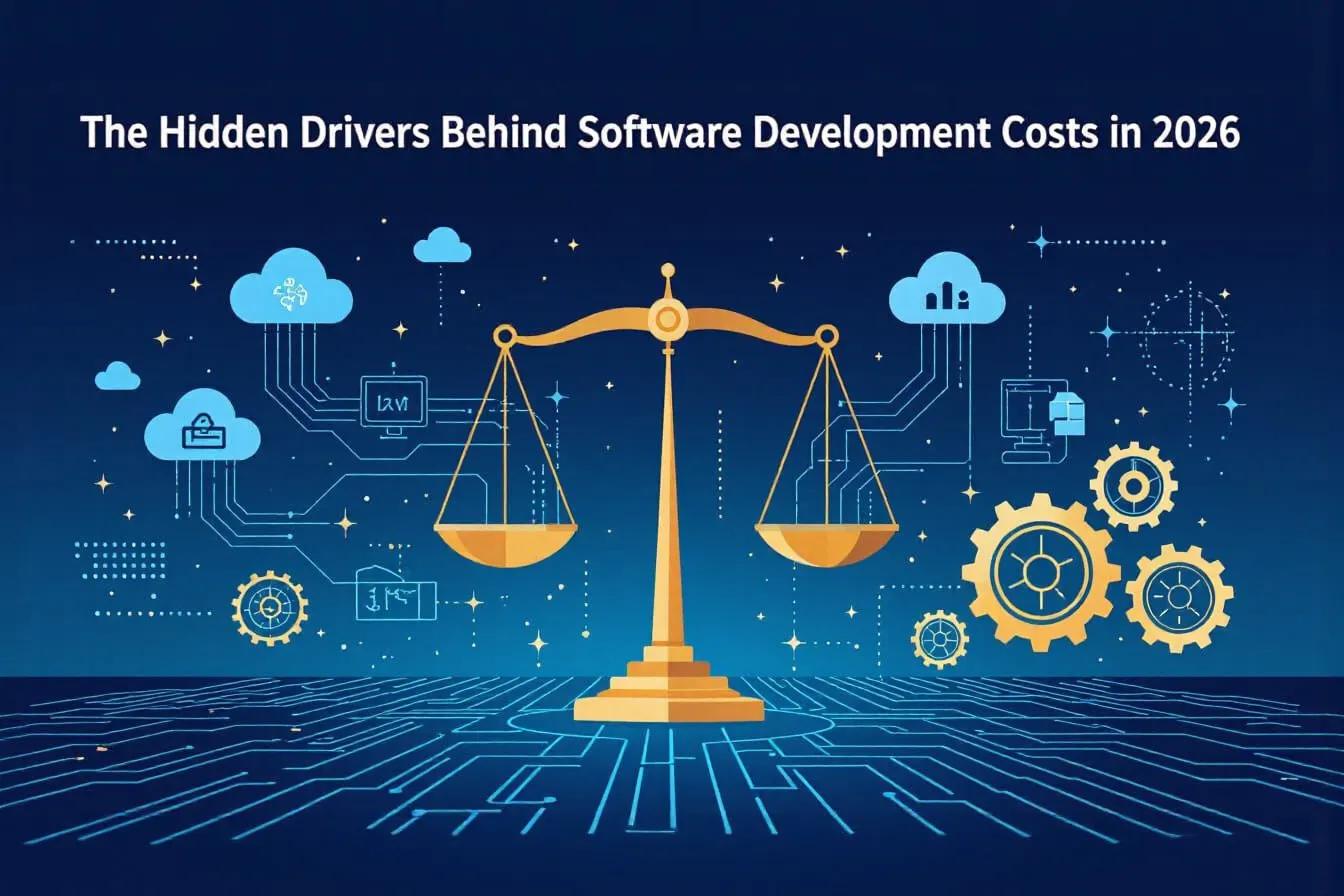29 Sep 2025
•by Code Particle
•5 min read

You're probably hearing a lot about how AI in software development can speed things up. And it can, no doubt. But like anything that seems too good to be true, there's more to the story. You might be thinking about the cost of the tools themselves, or maybe the fancy hardware. However, there are other costs, the ones that sneak up on you, that you really need to consider before you jump in headfirst. Let's talk about what those hidden costs really are.
AI in software development can boost productivity by 55%, but it comes with hidden debts. AI-generated code may have hidden bugs and require more analysis. It can also generate complex issues to manage. While AI-generated code may be faster, the project may not be shorter if not properly integrated or caused by problems.
Consider these points:
So, while AI offers a compelling productivity boost, it’s important to look beyond the initial speed-up and understand the full picture of how it impacts your development process and long-term project health.
You're probably hearing a lot about how AI can speed things up in software development. And it can, no doubt. But like anything that seems too good to be true, there's a price tag attached, and it's not always obvious. Let's break down some of the costs that often get overlooked when you start bringing AI into your workflow.
The real cost of AI goes beyond computational power, requiring GPUs, power, cooling, and maintenance. Companies are reconsidering cloud AI plans and migrating workloads back on-premises to ensure optimal performance and productivity.
The budget drain from retraining and fine-tuning AI models is significant, as it requires resources, time, and money to optimize parameters, test configurations, and analyze results.
Overdependence on AI vendors can be difficult to break due to high data egress prices, compatibility concerns, and infrastructure rebuilding, making switching providers costly and potentially requiring a new ecosystem.
AI automates tasks but doesn't automate responsibility. Compliance with regulations, data privacy, and bias is crucial. Complexity can introduce security vulnerabilities. Budget for robust security measures and ongoing compliance checks.
AI-generated code, while quick, may not always be good due to efficiency, maintainability, or subtle bugs. Human oversight is crucial, as developers need to review, test, and refactor AI-generated code to ensure it meets quality standards and integrates with existing codebases.
Fast AI builds can lead to “AI debt” due to inadequate planning and system management, creating a complicated, hard-to-maintain ecosystem. Managing this debt requires a shift from model-focused to AI system-lifecycle management.

You could believe your job is done once AI tools generate code. Speed makes it easier to lose focus, but that's when you need to be most alert. A powerful assistant, AI does not replace critical thinking.
Think like this: AI can write a complicated legal document, but you wouldn't sign it without a lawyer, right? The same applies. AI may produce code, suggest architectural patterns, and write tests, but it doesn't comprehend your project's context, long-term goals, or delicate business logic.
Here’s why keeping a human in the loop is so important:
AI's potential is vast, but it requires human validation for unexpected situations. Senior engineers, in particular, can transform from reviewing code to becoming AI prompt architects and design mentors. This shift ensures AI's speed doesn't compromise quality, security, or strategic direction, fostering collaborative design sessions.
Choosing the right partner for AI software development is crucial for understanding your goals and avoiding mistakes. A reliable, skilled, and upfront partner can help avoid unexpected costs, integration issues, and code maintenance issues.
Here’s what to look for:
Successful AI adoptions require careful planning, realistic expectations, and a strong, collaborative relationship with technology providers. Choosing wisely ensures real benefits like faster development cycles, better code quality, and innovative solutions without hidden costs or technical debt.
Related: AI in Healthcare: The Future of Patient Care and Health Management
CodeParticle is a trusted partner for safe, scalable AI adoption in software development. They help avoid common pitfalls and accelerate developer growth by enabling junior team members to understand complex architectural concepts and security considerations. They believe AI augments capabilities and speeds up the learning curve, not replacing them.
Our approach focuses on building sustainable AI integration, not just quick wins. We help you:
Our pragmatic adoption strategy focuses on designing workflows that benefit from AI, using AI as a design partner. We emphasize long-term maintainability and adaptability, aiming to create scaffolding for tomorrow's potential, not just guardrails for today's risks.
Related: How Custom Software Development Supercharges Your Business

AI's excitement can lead to significant costs, including ongoing updates, vendor lock-in, and compliance and security efforts. To manage these hidden costs, adopt a pragmatic, phased approach, focusing on what delivers real value now. Start with pre-trained models or open-source solutions, being smart with your resources and avoiding complex models immediately.
AI Project Strategy:
Adopting AI intelligently requires understanding the full cost picture, from initial development to ongoing maintenance and potential risks. Being strategic and deliberate helps avoid common cost traps. AI can be a powerful tool, but wise use is crucial. Visit our website for more information.
As you bring AI into your software development, remember it's not just about the shiny new tools. You've seen how the costs can add up, from needing specialized people and powerful computers to dealing with integration headaches and even the energy it all uses. Plus, there's this “AI debt” thing, where quick gains can lead to bigger problems later if you're not careful. It’s easy to get caught up in the excitement, but taking a step back to plan how you'll handle these hidden expenses is really important. Think about managing AI like any other big project: keep an eye on the details, plan for the long haul, and make sure your team knows what they're doing. That way, you can actually get the benefits without getting buried under unexpected bills or a mess of code.